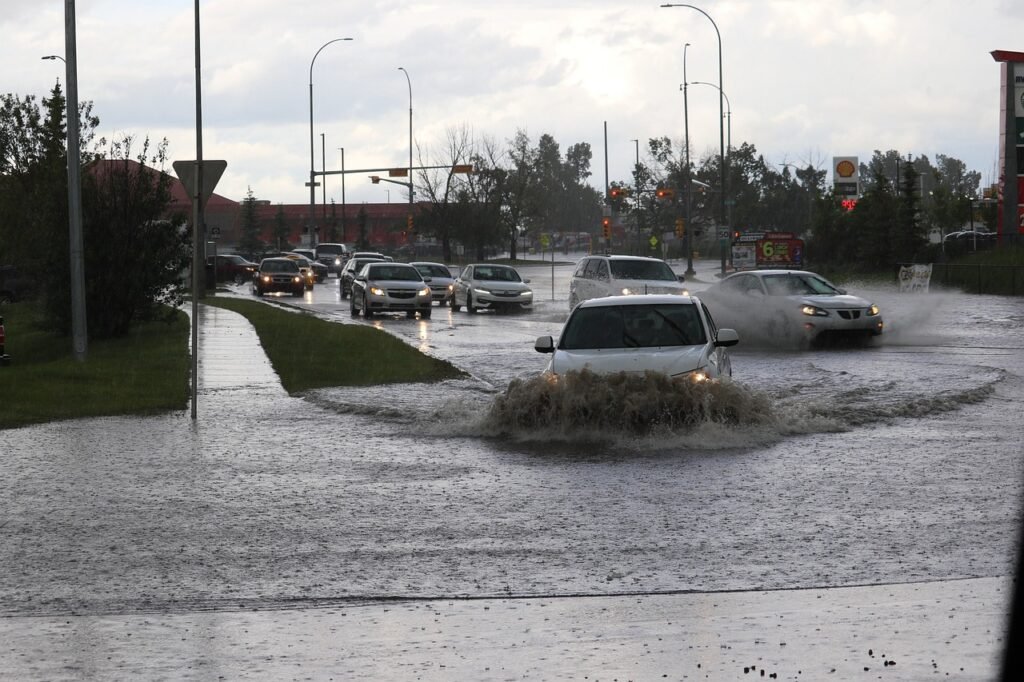In recent years, North Carolina faced an unexpected adversary: North Carolina Flooding Helene. When the storm finally came ashore it brought whipping winds carrying a constant down pour that flooded areas of the state and forced residents out of the water.
The Deluge Descends of North Carolina Flooding Helene
When Helene’s eye was near the coast, weathermen began issuing the alerts of the disaster. But, I think, nothing could have gotten those residents ready for what would follow next. Suddenly the storm began, in effect, it was raining cats and dogs for hours as if it rained a whole month’s rainfall in a few hours. Some rivers rose, some creeks flooded and some streets turned into streams and rivers with torrents.
Local residents shared the same reaction, one of them being Sarah Thompson, who has been living in New Bern for 50 years, who never witnessed anything like this before. So the conclusion of people of that period was that it seemed as if the entire world was flooded.
Communities Under Siege in North Carolina Flooding Helene
The flooding spared no corner of the state, but some areas bore the brunt of Helene’s wrath:
- New Bern: The historic town found itself at the mercy of the swollen Neuse and Trent rivers.
- Wilmington: Cut off from the mainland, becoming an island amidst the chaos.
- Jacksonville: Marine Corps Base Camp Lejeune faced unprecedented flooding.

The Immediate Aftermath
As the waters rose, so did the urgency of rescue efforts. Buses and cars literally floated in the water to which the National Guard responded by sending in boats and helicopters to help evacuee from rooftops and upper floors. Local champions appeared, people with personal watercraft were rescuing their fellow citizens.
Human spirit was at the best in these marshy, ill-lit days.
Counting the Cost
The receding waters left behind a trail of destruction and a staggering economic toll:
- Agricultural Losses: Food crops were left to decompose in the fields, animal dead, and good arable lands were eroded.
- Infrastructure Damage: The roads crumbled, bridges fell, and electricity poles also fell.
- Business Interruption: Every small business owner, every manufacturer or service provider, every large conglomerate saw its operations shut down.
Nature’s Scars
The environmental impact was equally severe:
- Toxic waste from flooded industrial sites seeped into waterways.
- Erosion reshaped coastlines and riverbanks.
- Wildlife habitats were destroyed, displacing countless species.
Homes and Lives Upended
According to LAC, at least thousands of houses lost their livability more than just property damage it meant the loss of their homes and livelihoods:
- Thousands of houses were deemed uninhabitable.
- Entire neighborhoods required extensive rebuilding.
- Family heirlooms and irreplaceable memories were washed away.

Emerging from the Waters
The North Carolina state proved one thing that where there is a challenge, there is ways to deal with it. People united, people helped people, people started the process of creating their homes anew. Current issues of flood maps and zoning ordinances. The individuals’ awareness of issues in disparate designs of stormwater management systems. What makes wetlands and forests so important as natural barriers during floods and floods danger? recent years, North Carolina faced an unexpected adversary: Hurricane Helene. Although the storm listened and moved inland, it took with it a deluge of rain that to this day has left parts of the state flooded and the people of the state looking for where to escape to.
